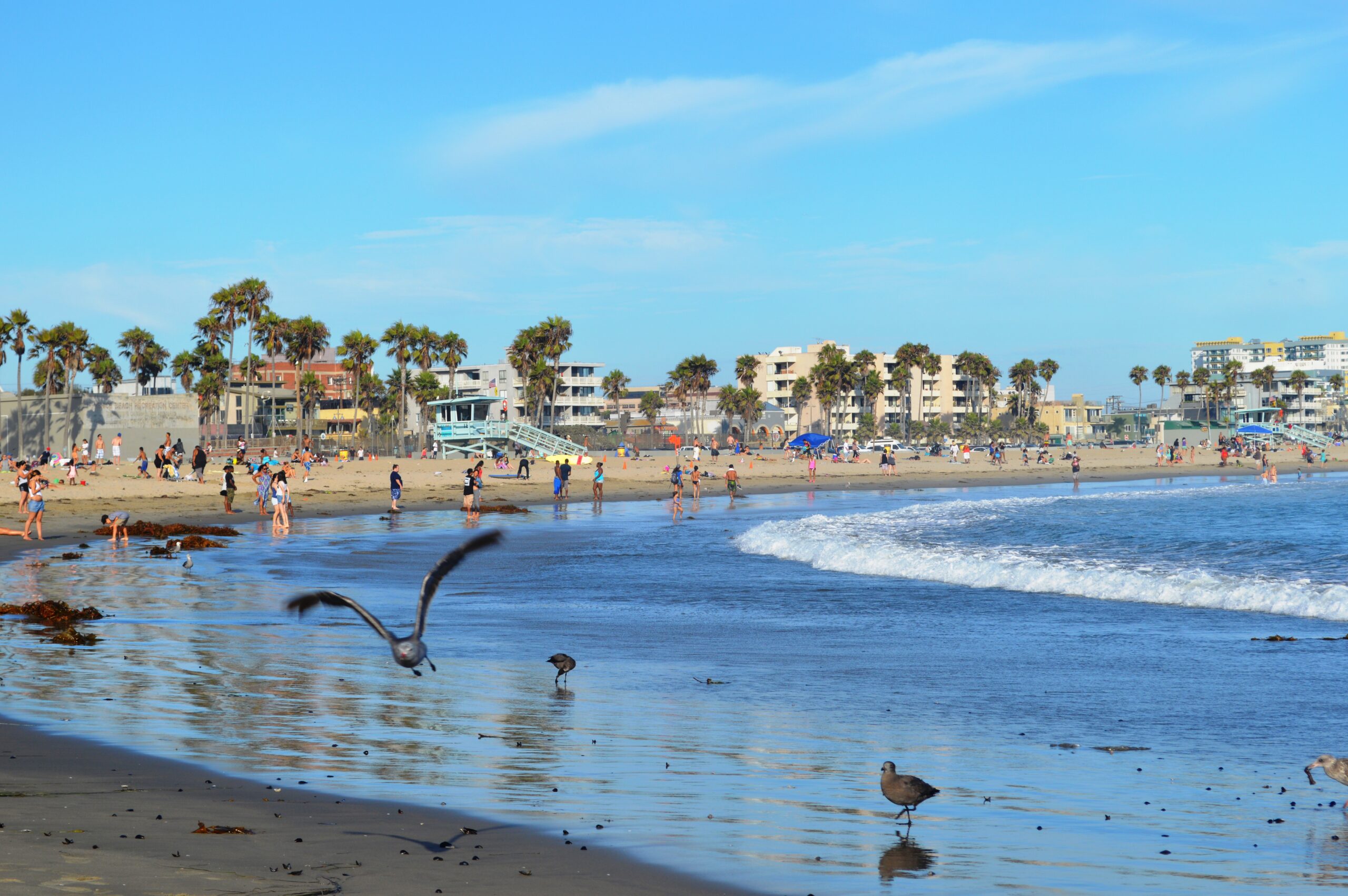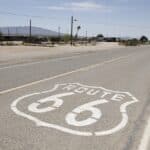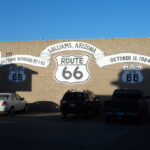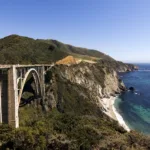Best Road Trips from Los Angeles in 2024
Embarking on a road trip from Los Angeles unveils a world of adventure, diverse landscapes, and captivating destinations waiting to be explored. From the rugged coastlines of the Pacific to the towering sequoias of the Sierra Nevada, each road trip promises a unique blend of scenic beauty, cultural richness, and the thrill of the open road. Whether you seek the iconic views along the Pacific Coast Highway, the enchanting landscapes of Joshua Tree National Park, or the nostalgia of Route 66, Los Angeles serves as a gateway to a myriad of road trip experiences. Join us as we traverse the highways and byways, discovering the best road trips from Los Angeles that promise to satisfy every wanderlust-filled heart.
Note: Some of the links in this article are affiliate links. This means that we may earn a small commission if you purchase through these links, at no extra cost to you. We only recommend products and services that we truly believe in and that can enhance your travel experience.
Pacific Coast Highway (PCH): Explore the stunning coastline along Highway 1, passing through Malibu, Santa Barbara, and Big Sur, with breathtaking ocean views.
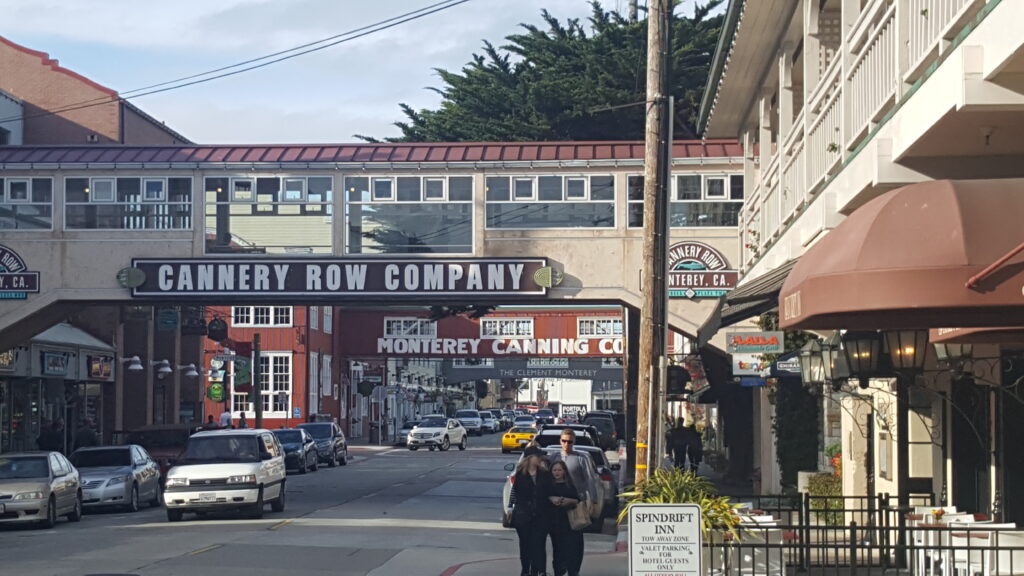
Route Overview and Recommended Itinerary
The Pacific Coast Highway, often regarded as one of the finest road trips from Los Angeles, unfolds a mesmerizing journey along California’s coastline. With approximately 655 miles of scenic beauty, this iconic route starts in Dana Point and meanders up to Leggett.
For those eager to witness the iconic coastal beauty of the PCH, it’s advisable to plan for at least a 2 to 3-day itinerary. This allows for ample time to explore renowned highlights such as Malibu, Santa Barbara, Big Sur, and Monterey, as well as to indulge in spontaneous discoveries along the way. The road trip’s charm lies not just in the miles covered but in the moments seized, whether it’s savouring the sunset at a secluded beach or taking a detour to explore a charming coastal village.
Reasons to Explore:
Embarking on a Pacific Coast Highway (PCH) road trip offers an unparalleled adventure, inviting travellers to immerse themselves in the beauty of the California coastline. The reasons to explore this iconic route are as diverse as the landscapes it traverses. From the golden beaches of Malibu to the rugged cliffs of Big Sur, every mile unfolds a new vista, making it a must-visit for those seeking a blend of scenic wonders and coastal charm.
Key Attractions:
The highlights along the PCH are a visual feast for nature enthusiasts and road trip aficionados alike. Picture-perfect scenes of the Santa Monica Pier, the iconic Bixby Creek Bridge in Big Sur, and the enchanting McWay Falls are just a glimpse into the captivating sights that punctuate the journey. Beach towns like Santa Barbara and Monterey beckon with their unique character, offering a blend of cultural richness and seaside tranquillity.
Important Considerations:
Before embarking on this coastal odyssey, it’s crucial to note a few considerations. The Pacific Coast Highway is known for its winding roads and sharp turns, demanding a cautious approach during the drive. Weather conditions can vary, so staying informed about the forecast is advisable. Additionally, fuel up in advance, as some stretches have limited gas stations. To fully savour the experience, plan for ample stops to soak in the scenic beauty and explore charming towns along the way.
FAQ: Frequently Asked Questions
When is the best time to visit Joshua Tree National Park?
The optimal time to visit is during the fall and spring when temperatures are milder. Summers can be extremely hot, and winters can get chilly, so plan accordingly. The optimal time to visit is during the fall and spring when temperatures are milder. Summers can be extremely hot, and winters can get chilly, so plan accordingly.
Are there camping facilities in Joshua Tree?
Yes, the park offers several campgrounds. Some are first-come, first-served, while others require reservations. Check the National Park Service website for detailed information and availability.
What are the must-visit attractions within the park?
Key attractions include Skull Rock, Hidden Valley, Keys View, and Cholla Cactus Garden. Each offers unique geological formations, scenic viewpoints, and a chance to experience the park’s diverse ecosystems.
Are there stargazing opportunities in Joshua Tree?
Yes, the park is renowned for its dark skies, making it an excellent destination for stargazing. The Milky Way and numerous constellations are visible on clear nights.
Is there an entrance fee for Joshua Tree National Park?
Yes, there is an entrance fee. Check the National Park Service website for current fees and any pass options that may be available.
Joshua Tree National Park: Head east to experience the unique landscapes of Joshua Tree, known for its otherworldly rock formations and iconic Joshua trees.
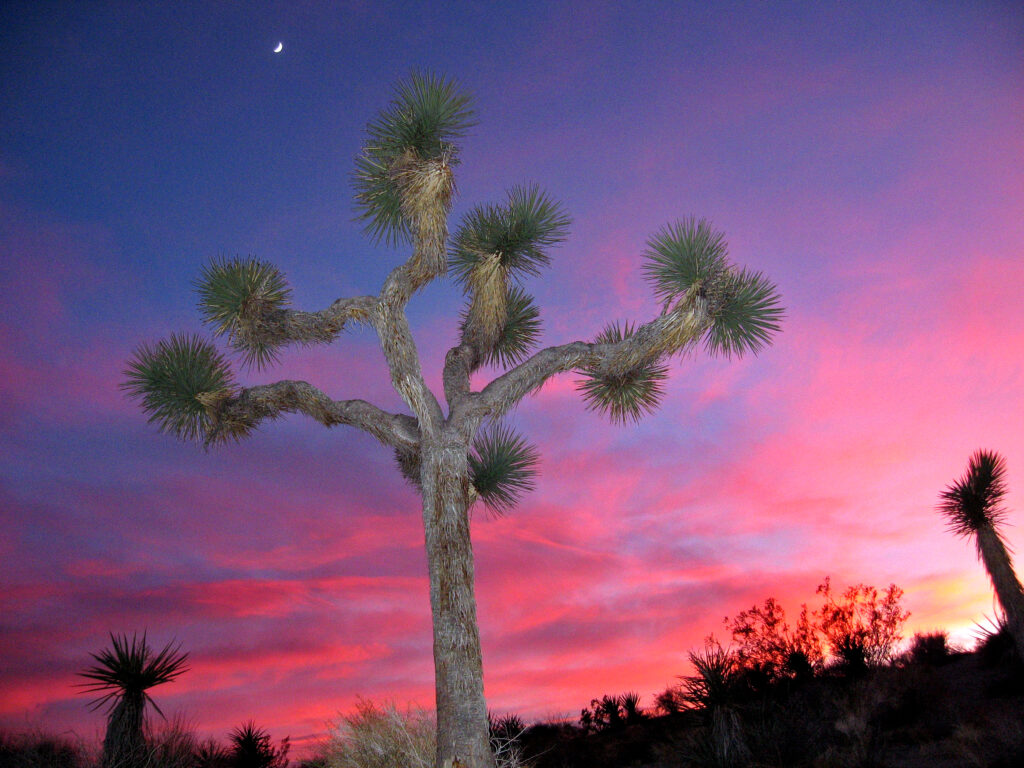
Route Overview and Recommended Itinerary:
Embarking on a road trip to Joshua Tree National Park unveils an otherworldly experience, positioning it as one of the must-visit road trips from Los Angeles. Covering an approximate distance of 130 miles (209 kilometres) from Los Angeles, the drive to Joshua Tree is a compelling adventure. To fully appreciate the park’s beauty, a recommended itinerary spans 1 to 2 days, allowing ample time for exploration and awe-inspiring moments.
Reasons to Explore:
The allure of Joshua Tree lies in its distinctive terrain, characterised by the iconic Joshua trees, striking rock formations, and expansive desert vistas. Nature enthusiasts, rock climbers, and stargazers find solace in the park’s tranquil beauty. The reasons to explore are abundant, from hiking through hidden oases to stargazing under the dark desert skies. Joshua Tree offers a unique blend of serenity and adventure, making it a must-visit destination.
Key Attractions:
As you traverse the park, key attractions beckon with their natural wonders. The Joshua Tree Visitor Center serves as an informative starting point, providing insights into the park’s ecology and geology. Iconic sites such as Skull Rock, Hidden Valley, and Keys View offer diverse experiences, from surreal rock formations to panoramic vistas of the Coachella Valley and Salton Sea.
Important Considerations:
Planning your Joshua Tree road trip requires attention to a few essential considerations. The desert climate demands hydration, so be sure to carry sufficient water. The park’s vastness and the unpaved nature of some roads make a high-clearance vehicle advisable for certain trails. Checking for park alerts, especially during the summer months, ensures a safe and enjoyable visit. Lastly, embracing the minimal light pollution, especially at night, reveals the park’s celestial wonders.
FAQ: Frequently Asked Questions
When is the best time to visit Death Valley National Park?
The ideal time is late fall to early spring when temperatures are milder. Summers can be excessively hot, exceeding 120°F (49°C).
Are there accommodations within Death Valley?
Yes, the park offers various lodging options, including the historic Furnace Creek Inn. Campgrounds are also available, but it’s advisable to check for reservations, especially during peak seasons.
Can I hike in Death Valley, and are there marked trails?
Hiking is possible, and there are marked trails, but it’s crucial to carry adequate water, wear appropriate clothing, and be mindful of the challenging desert conditions.
Are there wildlife and plant life in Death Valley?
Despite its harsh conditions, Death Valley hosts diverse wildlife and unique plant species. Visitors may encounter desert tortoises, bighorn sheep, and vibrant wildflowers during bloom seasons.
Is stargazing popular in Death Valley, and are there designated areas for it?
Yes, Death Valley is a designated Dark Sky Park, making it an exceptional stargazing destination. Visitors can enjoy the celestial display from various viewpoints within the park.
Death Valley National Park: Venture northeast to witness the extreme beauty of Death Valley, with its vast desert landscapes, salt flats, and colourful canyons.
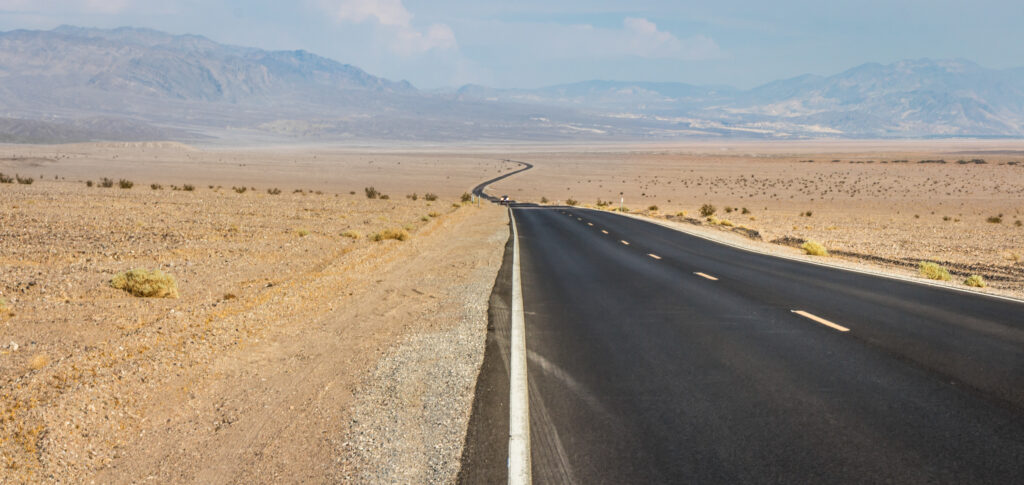
Route Overview and Recommended Itinerary:
Venturing into Death Valley, known as one of the best road trips from Los Angeles, immerses you in a landscape of extremes.. The drive spans approximately 300 miles (483 kilometres) from Los Angeles, leading eastward to the heart of the Mojave Desert. For an optimal experience, a recommended itinerary spans 2 to 3 days, allowing for thorough exploration of the park’s diverse wonders and ample time for appreciation.
Reasons to Explore:
Death Valley National Park beckons adventurers with its stark beauty, surreal landscapes, and record-breaking temperatures. The reasons to explore this otherworldly destination are numerous, from witnessing the iconic Badwater Basin, the lowest point in North America, to marvelling at the vastness of the Mesquite Flat Sand Dunes. The park’s unique geology, wildflower blooms, and stargazing opportunities make it a must-visit for those seeking a captivating and unconventional experience.
Key Attractions:
As you traverse Death Valley, key attractions captivate with their extreme beauty and geological significance. Badwater Basin, Artist’s Palette, Zabriskie Point, and Dante’s View showcase the park’s diverse terrain, from salt flats and colourful mineral deposits to panoramic vistas of the valley floor. Mesquite Flat Sand Dunes offer a serene expanse perfect for photography and exploration.
Important Considerations:
Planning a road trip to Death Valley requires careful consideration due to the extreme desert conditions. Hydration is paramount, as temperatures can soar, especially during the summer months. Ensure your vehicle is well-maintained, and carry sufficient water, especially if venturing off the main roads. Check for road closures and be prepared for limited services within the park.
FAQ: Frequently Asked Questions
When is the best time to visit Santa Barbara Wine Country?
The spring and fall seasons are ideal for visiting, as the weather is mild, and vineyards are often in bloom or harvest. However, wine tasting is enjoyable year-round, with each season offering its unique charm.
Are there accommodations available in Santa Barbara Wine Country?
Yes, the region offers a variety of lodging options, including boutique hotels, cosy bed and breakfasts, and luxury resorts. Many accommodations offer packages that include wine tasting experiences.
Do I need to make reservations for wine tastings?
While some wineries accept walk-ins, many boutique wineries require reservations, especially for group tastings or tours. It’s recommended to check the winery’s website or contact them directly to secure your spot.
Are there non-alcoholic activities to enjoy in Santa Barbara Wine Country?
Yes, aside from wine tasting, the region offers outdoor activities such as hiking, cycling, and exploring the charming towns and scenic landscapes. Additionally, visitors can indulge in farm-to-table dining experiences and artisanal shopping.
Is it possible to bring children along to wine tastings?
While some wineries may allow children on their premises, wine tasting is typically reserved for adults aged 21 and over. However, families can enjoy picnics, vineyard tours, and other family-friendly activities offered by certain wineries.
Santa Barbara Wine Country: Take a leisurely drive to Santa Ynez Valley, where you can enjoy scenic vineyards, wine tastings, and charming small towns.
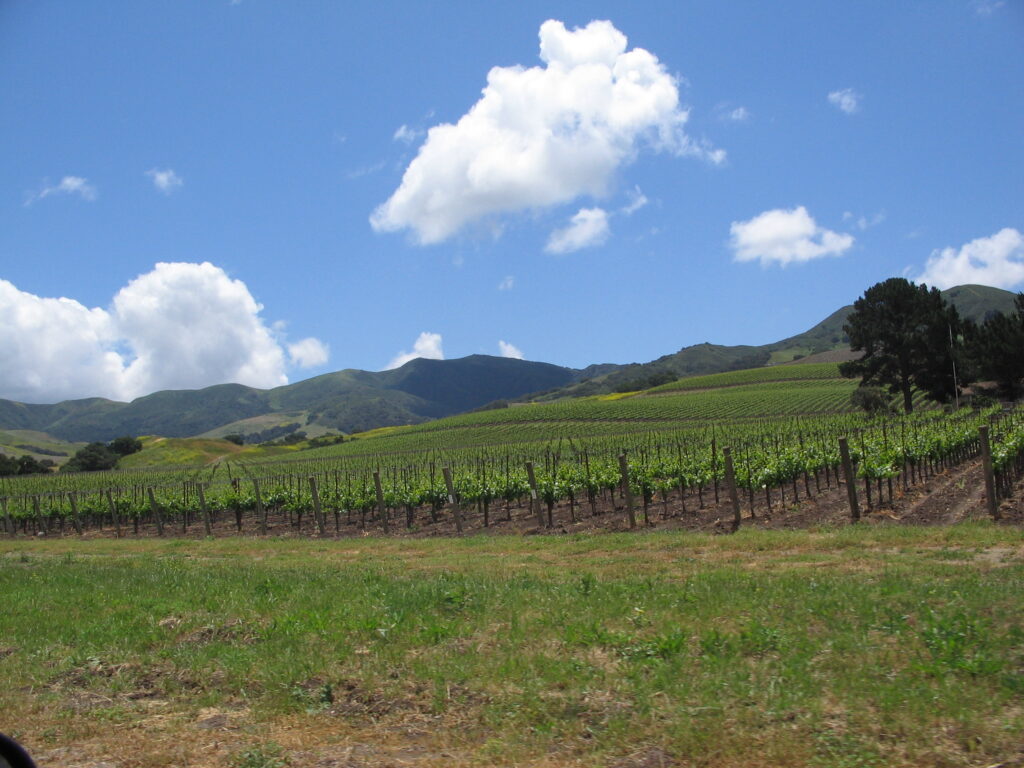
Route Overview and Recommended Itinerary:
Embarking on a road trip to Santa Barbara Wine Country, acclaimed as one of the best road trips from Los Angeles for wine enthusiasts, promises a delightful journey through picturesque vineyards. The drive from Los Angeles to Santa Barbara covers approximately 90 miles (145 kilometres) along the scenic Pacific Coast Highway (Highway 101) and Highway 154. For a leisurely experience, a recommended itinerary spans 2 to 3 days, allowing ample time for wine tasting, exploring vineyards, and savouring the region’s culinary delights.
Reasons to Explore:
Santa Barbara Wine Country beckons wine enthusiasts and travellers seeking a taste of California’s renowned viticulture. The region boasts a Mediterranean climate ideal for grape cultivation, producing an array of award-winning wines. Exploring Santa Barbara Wine Country offers the opportunity to visit boutique wineries, indulge in wine tastings, and learn about the winemaking process amidst the backdrop of scenic vineyards and rolling hills.
Key Attractions:
As you traverse Santa Barbara Wine Country, key attractions entice with their unique charm and exceptional wine offerings. The Santa Ynez Valley, home to renowned AVAs (American Viticultural Areas) such as Santa Rita Hills and Santa Ynez Valley, is dotted with boutique wineries, tasting rooms, and estate vineyards. Must-visit destinations include Solvang, a Danish-inspired village, Los Olivos, known for its art galleries and wine tasting rooms, and Ballard Canyon, celebrated for its Rhône varietals.
Important Considerations:
Planning a road trip to Santa Barbara Wine Country involves consideration of several important factors. Designate a designated driver or consider booking a guided wine tour to ensure responsible tasting experiences. Some wineries require reservations for tastings, so it’s advisable to plan ahead and check for availability. Additionally, familiarise yourself with the region’s wine trails and tasting fees to optimise your itinerary.
FAQ: Frequently Asked Questions
Is Lake Arrowhead suitable for year-round visits?
Yes, Lake Arrowhead is a year-round destination. Each season offers a different experience, from snow-covered landscapes in winter to blooming wildflowers in spring and outdoor activities in summer.
Are there water sports and recreational activities on the lake?
Absolutely! Lake Arrowhead provides opportunities for boating, fishing, and water skiing. Additionally, the surrounding mountains offer hiking and biking trails for outdoor enthusiasts.
Can I rent a cabin or vacation home at Lake Arrowhead?
Yes, there are various cabin and vacation home rentals available, providing a cosy and intimate experience amidst the scenic beauty of the mountains.
Are there family-friendly activities in Lake Arrowhead?
Yes, the village and lake area offer family-friendly attractions, including parks, play areas, and seasonal events. The Lake Arrowhead Queen boat tour is often enjoyed by visitors of all ages.
What is the best route to drive to Lake Arrowhead from Los Angeles?
The most common route is to take I-210 E from Los Angeles and then head north on CA-18 to reach Lake Arrowhead. Ensure your vehicle is prepared for mountainous terrain, especially if driving during winter months.
Lake Arrowhead: Escape to the mountains with a drive to Lake Arrowhead, offering a serene alpine setting and outdoor activities like hiking and boating.
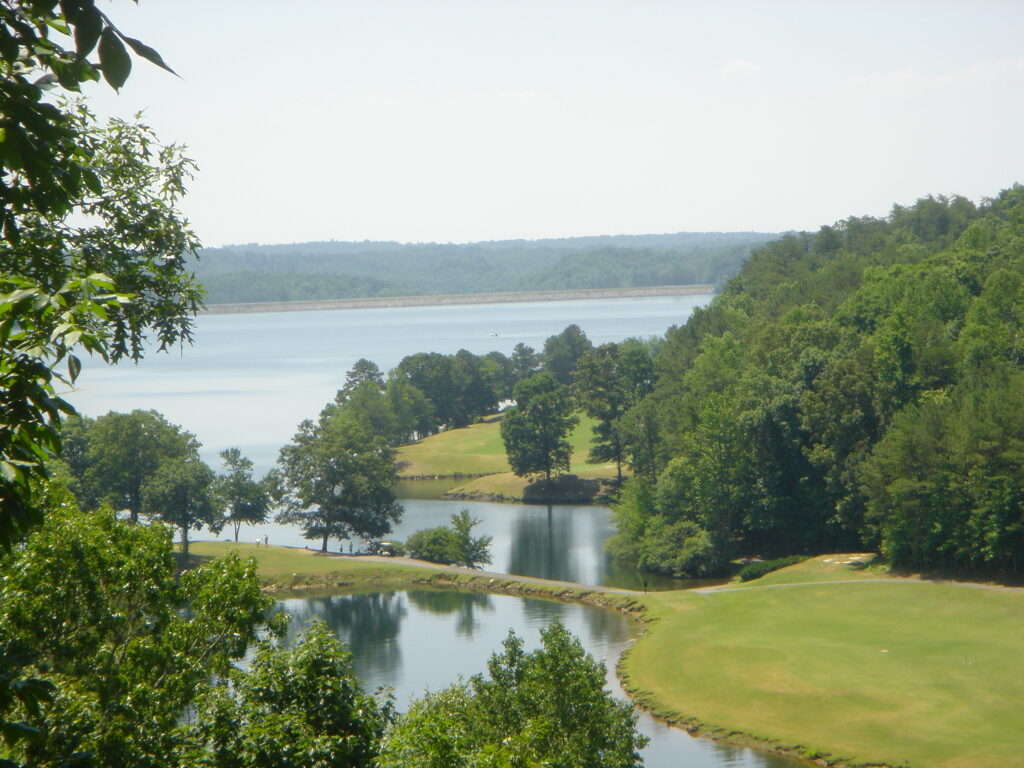
Route Overview and Recommended Itinerary:
Lake Arrowhead, nestled in the San Bernardino Mountains, provides an idyllic setting for one of the best road trips from Los Angeles. The route overview captures the essence of mountain serenity and alpine beauty. Located about 80 miles (129 kilometres) northeast of Los Angeles, the drive to Lake Arrowhead is an enjoyable two-hour journey. A recommended itinerary typically spans a weekend, allowing ample time to unwind by the lake and explore the charming surroundings.
Reasons to Explore:
Lake Arrowhead beckons travellers with its alpine beauty and tranquil ambiance. The reasons to explore this mountain retreat are as varied as the seasons themselves. Whether it’s a desire for outdoor activities like hiking and boating, a love for picturesque lakeside villages, or simply a yearning for a peaceful getaway, Lake Arrowhead offers a perfect blend of nature and relaxation.
Key Attractions:
As you arrive at Lake Arrowhead, key attractions unfold in the form of the pristine lake itself, surrounded by towering pine trees. The Lake Arrowhead Village, with its charming shops, restaurants, and lakefront promenade, invites leisurely strolls. Take a scenic boat tour on the lake or explore nearby hiking trails like the Pacific Crest Trail for breathtaking views of the San Bernardino National Forest.
Important Considerations:
Planning a Lake Arrowhead road trip requires considerations to fully appreciate the mountainous surroundings. Weather conditions can vary, so pack accordingly, especially during winter when snowfall is possible. If visiting during the summer, consider water activities on the lake, and if you plan to hike, wear appropriate footwear. Check for any seasonal events happening in the village to add a cultural touch to your visit.
FAQ: Frequently Asked Questions
Is the Angeles Crest Scenic Byway suitable for all vehicles?
While the majority of the byway is accessible by regular vehicles, certain sections with steep grades and tight curves may be more suitable for vehicles with good handling.
Are there hiking trails along the Angeles Crest Scenic Byway?
Yes, the byway offers access to numerous hiking trails, including those leading to popular destinations like Mount Waterman and Mount Islip. Check trail conditions and permits before embarking on a hike.
Can I visit the Mount Wilson Observatory during the road trip?
Yes, Mount Wilson Observatory is a highlight along the byway. Check for operating hours and any special events happening at the observatory.
Are there designated picnic areas along the Angeles Crest Scenic Byway?
Yes, several pullouts and scenic viewpoints along the byway provide ideal spots for picnics. Bring your own supplies and enjoy a meal amidst the mountain scenery.
What is the best time of year to explore the Angeles Crest Scenic Byway?
The byway is enjoyable year-round, but spring and fall offer pleasant weather and vibrant landscapes. Winter may bring snow, providing a different but equally enchanting experience.
Angeles Crest Scenic Byway: Explore the San Gabriel Mountains on this scenic route, enjoying panoramic views, dense forests, and mountainous landscapes.

Route Overview and Recommended Itinerary:
The Angeles Crest Scenic Byway, considered among the best road trips from Los Angeles, unveils a mountainous escape just a short drive away. The byway, officially known as State Route 2, covers approximately 66 miles of winding roads, offering stunning vistas and a refreshing mountain escape. A recommended itinerary for this day trip typically includes starting in La Cañada Flintridge, exploring the scenic route, and enjoying stops like Mount Wilson Observatory before returning to Los Angeles.
Reasons to Explore:
The Angeles Crest Scenic Byway beckons adventure seekers and nature enthusiasts with its captivating beauty. Reasons to explore this mountainous route range from the thrill of winding through pine-covered slopes to the serene alpine ambiance. The proximity to Los Angeles makes it an accessible escape for those craving a scenic drive and a breath of fresh mountain air.
Key Attractions:
As you traverse the byway, key attractions emerge in the form of panoramic viewpoints, including the iconic Mount Wilson Observatory. Opportunities for hiking and exploring the diverse ecosystems of the San Gabriel Mountains further enhance the byway’s appeal.
Important Considerations:
Planning an Angeles Crest Scenic Byway road trip requires considerations for both safety and enjoyment. The winding roads demand cautious driving, particularly in sections with sharp turns. Weather conditions can vary, so check for road closures and ensure your vehicle is prepared for mountainous terrain. Pack essentials such as water, snacks, and comfortable clothing for outdoor exploration.
FAQ: Frequently Asked Questions
How far is Ojai Valley from Los Angeles, and what is the best route?
Ojai Valley is approximately 80 miles northwest of Los Angeles. The most common route is via US-101 N and CA-33 N, offering picturesque views along the way.
Are there outdoor activities in Ojai Valley?
Absolutely! Ojai Valley is a haven for outdoor enthusiasts. Explore hiking and biking trails, enjoy a round of golf, or indulge in a spa day at the renowned Ojai Valley Inn.
Can I experience local arts and culture in Ojai?
Yes, Ojai boasts a thriving arts scene. Visit galleries in the downtown area, attend cultural events at Libbey Park, and explore the Beatrice Wood Center for the Arts.
Are there vineyards and wineries in Ojai Valley?
While Ojai is not primarily known for its vineyards, there are a few boutique wineries worth exploring. Check out the local tasting rooms for a unique wine experience.
Is Ojai Valley suitable for a day trip, or should I plan an overnight stay?
Both options are viable, depending on your preferences. A day trip allows for a taste of Ojai’s charm, while an overnight stay provides a more immersive experience, especially if you want to explore the valley’s natural beauty and arts scene more thoroughly.
Ojai Valley: Head northwest to Ojai, a peaceful town surrounded by hills, orchards, and vineyards, providing a perfect weekend getaway.
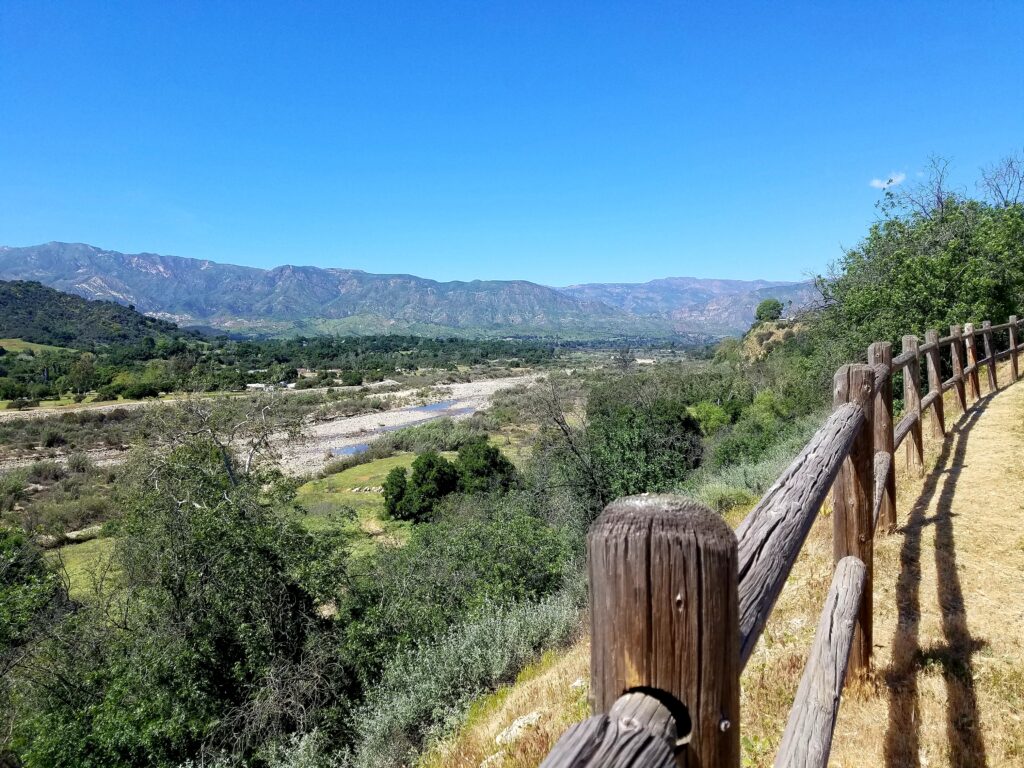
Route Overview and Recommended Itinerary:
Venturing into the Ojai Valley promises a road trip filled with artistic charm and natural beauty, making it one of the best road trips from Los Angeles. Situated about 80 miles northwest of Los Angeles, the drive to Ojai Valley is an enjoyable escape. A recommended itinerary for a day trip typically involves a leisurely drive through the picturesque Ojai Valley, exploring the downtown area, and indulging in the artistic and natural offerings that define this hidden gem.
Reasons to Explore:
Ojai Valley captivates visitors with its unique blend of artistic charm, natural beauty, and a tranquil atmosphere. The reasons to explore this idyllic destination range from the vibrant arts scene to the serene Ojai Valley Inn and Spa, making it an ideal retreat for those seeking a peaceful and culturally rich getaway from the bustling city life.
Key Attractions:
As you traverse Ojai Valley, key attractions come to life, including the Ojai Valley Trail for scenic biking and hiking. Libbey Park, with its century-old oak trees and cultural events, offers a delightful stop. Matilija Canyon beckons nature lovers with its hiking trails and waterfalls, while the eclectic shops and galleries in downtown Ojai provide a unique shopping experience.
Important Considerations:
Planning an Ojai Valley road trip requires considerations for the relaxed yet vibrant nature of the destination. The valley’s Mediterranean climate brings warm, dry summers and mild winters, making it suitable for year-round visits. Ensure your itinerary allows for strolls through the downtown area to explore boutiques, art galleries, and local eateries. Check for any local events or festivals that may enhance your experience.
FAQ: Frequently Asked Questions
How long does it take to drive the entire Route 66?
The duration can vary, but a recommended timeframe is 10 to 14 days to fully appreciate the route’s attractions and history.
What is the best time of year to embark on a Route 66 road trip?
Spring and fall are ideal, providing mild weather and avoiding extreme temperatures. Summer can be hot in certain regions, while winter may bring snow in some sections.
Can I drive Route 66 in a modern vehicle, or should I use a classic car?
Route 66 is accessible by modern vehicles, but driving a classic car can enhance the nostalgic experience. Ensure your vehicle is well-maintained for the long journey.
Are there camping options along Route 66?
While there are camping sites along the route, accommodations often include classic motels and hotels. It’s advisable to mix camping with stays in historic lodgings for the full experience.
What are the must-try foods along Route 66?
Indulge in classic American diner fare, including hamburgers, milkshakes, and pie. Each region along the route offers its own culinary specialties, adding flavour to the road trip.
Route 66 Adventure: Embark on the historic Route 66, starting in Santa Monica and passing through iconic stops like the Mojave Desert and the Grand Canyon.
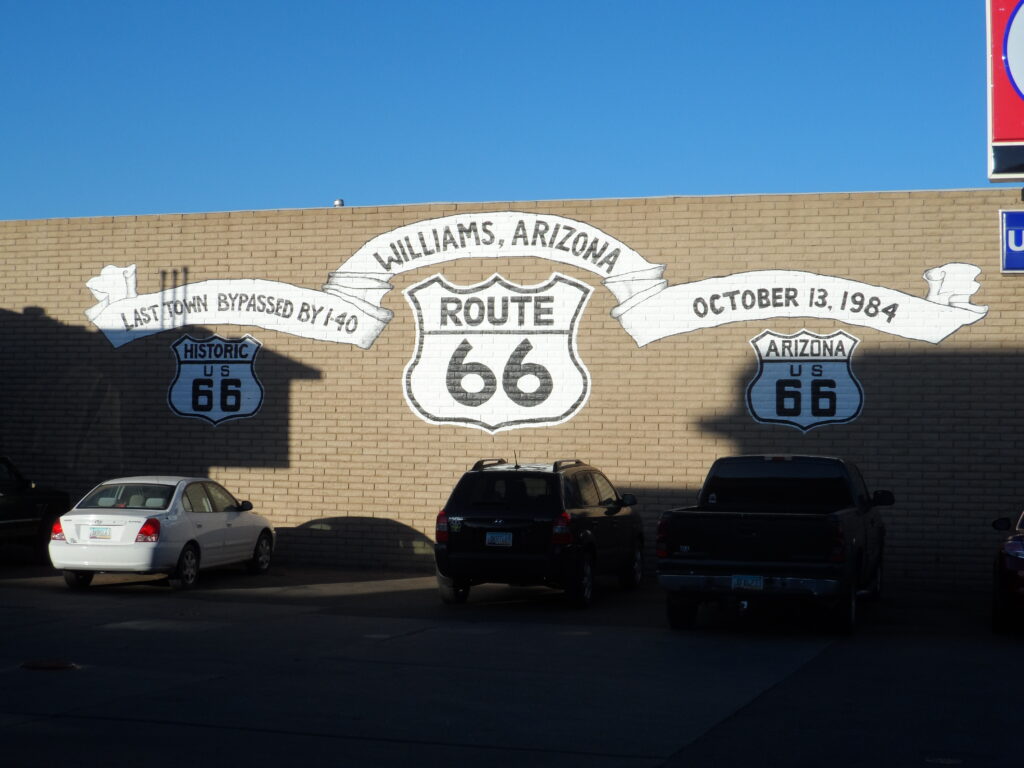
Route Overview and Recommended Itinerary:
Embarking on a Route 66 adventure, often hailed as one of the best road trips from Los Angeles. Certainly, it is one of the most iconic road trips and it catapults you into a nostalgic journey through the heart of America. The historic highway spans approximately 2,448 miles, passing through diverse landscapes, small towns, and iconic landmarks. A recommended itinerary typically involves exploring sections of Route 66 over 10 to 14 days, allowing for a leisurely journey with stops at classic diners, vintage motels, and quirky roadside attractions.
Reasons to Explore:
Route 66, often referred to as the “Main Street of America,” beckons adventurers with its rich history and cultural significance. The reasons to explore this legendary route extend beyond the sheer thrill of the open road. It’s a nostalgic voyage through time, offering a glimpse into the Americana of yesteryears, with neon signs, classic cars, and the spirit of exploration guiding the way.
Key Attractions:
As you traverse Route 66, key attractions unfold in the form of classic roadside diners, motels, and landmarks. Stops at the Cadillac Ranch in Amarillo, the historic Wigwam Motel in Holbrook, and the Santa Monica Pier bring the route’s unique charm to life. The quirky Blue Swallow Motel in Tucumcari and the iconic Route 66 Museum in Illinois add cultural depth to the journey.
Important Considerations:
Planning a Route 66 road trip requires considerations for both the historical significance of the route and the practical aspects of the adventure. While the nostalgia is palpable, some sections of the original Route 66 have been replaced by modern highways, and detours may be necessary to follow the historic path. It’s essential to check for road conditions, especially in remote areas, and plan for accommodations in advance, particularly if staying in vintage motels.
FAQ: Frequently Asked Questions
How long does it take to drive the San Diego Coastal Drive?
The drive typically takes a full day, allowing for stops and exploration along the way. However, the duration can vary based on individual preferences and the time spent at each attraction.
Are there opportunities for water activities along the route?
Absolutely! The coastal drive offers plenty of opportunities for water activities such as kayaking, snorkelling, and paddleboarding. Check with local rental shops for equipment.
What types of accommodations are available along the San Diego Coastal Drive?
Accommodations along the route range from beachfront hotels and resorts to cosy inns and vacation rentals. Whether you prefer luxury stays or charming bed and breakfasts, there are options to suit every traveller’s taste and budget.
Are there family-friendly attractions along the route?
Yes, the San Diego Coastal Drive is family-friendly. From beaches with tide pools to parks and cultural districts, there are activities suitable for all ages.
Is there a recommended time of day to start the drive for the best experience?
Starting the drive early in the day allows for better parking options at popular attractions and provides ample time to explore the various stops along the route.
San Diego Coastal Drive: Travel south to San Diego along the coastal route, enjoying picturesque beaches, seaside towns, and the vibrant culture of the city.
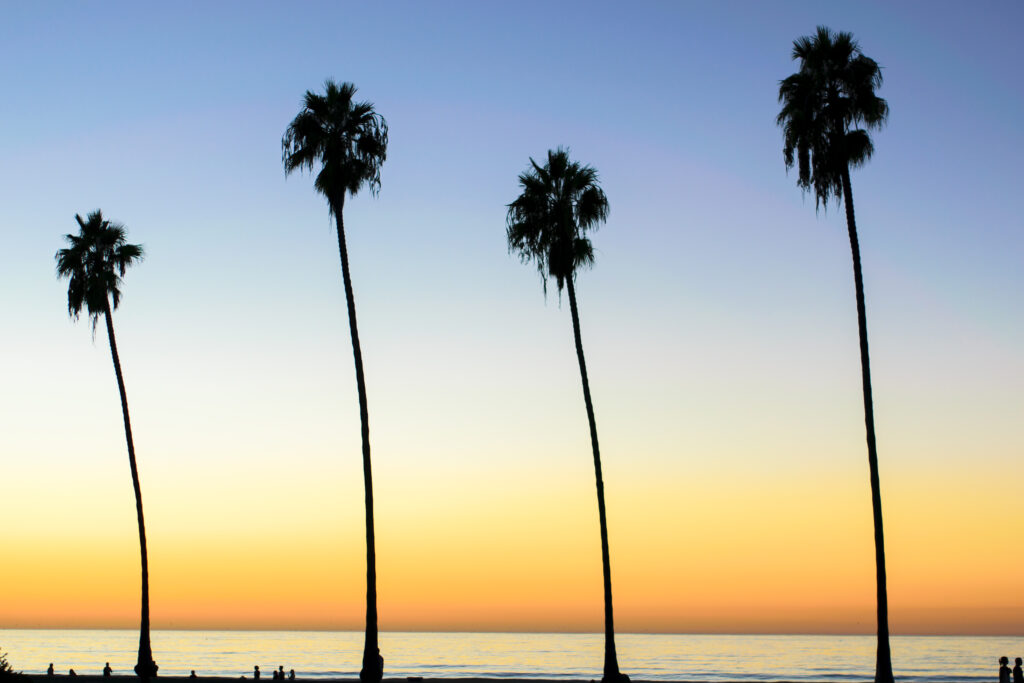
Route Overview and Recommended Itinerary:
Embarking on a road trip starting in Los Angeles, the San Diego Coastal Drive promises a breathtaking journey through Southern California’s scenic beauty. The drive covers approximately 59 miles, starting from La Jolla and meandering down the coastline to Imperial Beach. A recommended itinerary spans a full day, allowing for leisurely exploration of coastal towns, sandy beaches, and iconic viewpoints like Sunset Cliffs. This road trip stands as an invitation to explore not just the distance covered but the diverse coastal landscapes, cultural districts, and family-friendly attractions that dot the Southern Californian shoreline. For those seeking some of the best road trips from Los Angeles, the San Diego Coastal Drive offers a perfect blend of oceanic charm and coastal allure, making it a must-visit route for a day filled with scenic delights.
Reasons to Explore:
The San Diego Coastal Drive beckons travellers with its stunning coastal landscapes, charming communities, and vibrant cultural scene. Reasons to explore this picturesque route range from the opportunity to relax on pristine beaches to discovering the unique character of coastal neighbourhoods. Whether it’s enjoying water activities, exploring seaside parks, or indulging in local cuisine, this road trip offers a perfect blend of relaxation and discovery.
Key Attractions:
As you traverse the San Diego Coastal Drive, key attractions unfold along the way. Los Angeles serves as the starting point, with the drive taking you through La Jolla Cove, Del Mar’s upscale charm, the historic village of Old Town, and the lively Gaslamp Quarter in downtown San Diego. Don’t miss the panoramic views from Cabrillo National Monument and the laid-back atmosphere of Imperial Beach.
Important Considerations:
Planning a San Diego Coastal Drive road trip starting in Los Angeles requires considerations for the diverse experiences along the route. The coastal climate can vary, so pack layers and sunscreen. Traffic may be heavier in popular areas, so plan accordingly and consider starting the drive early to secure parking at popular stops. Check for any park or beach closures, and be aware of seasonal events that may impact your itinerary.
FAQ: Frequently Asked Questions
How long does it take to drive through Sequoia and Kings Canyon National Parks?
A thorough exploration of both parks typically takes at least two days. The scenic drives, hiking trails, and key attractions demand time for appreciation and exploration.
Can I see wildlife in Sequoia and Kings Canyon?
Yes, both parks are home to diverse wildlife, including black bears, mule deer, and various bird species. Be cautious, adhere to wildlife safety guidelines, and enjoy observing animals in their natural habitat.
Are there accommodations within the parks?
Yes, there are lodging options within the parks, ranging from lodges and cabins to campgrounds. Reservations are recommended, especially during the peak summer season.
What is the best time to visit Sequoia and Kings Canyon National Parks?
The summer months (June to August) offer pleasant weather for exploration. However, spring and fall also provide unique experiences, with blooming wildflowers in spring and vibrant foliage in fall.
Are there hiking trails suitable for all fitness levels?
Yes, the parks offer a variety of trails catering to different fitness levels. From easy nature walks to challenging hikes, there’s a trail for everyone. Check trail difficulty ratings before embarking on a hike.
Sequoia and Kings Canyon National Parks: Journey north to experience the awe-inspiring giant sequoia trees, deep canyons, and mountainous landscapes of these national parks.
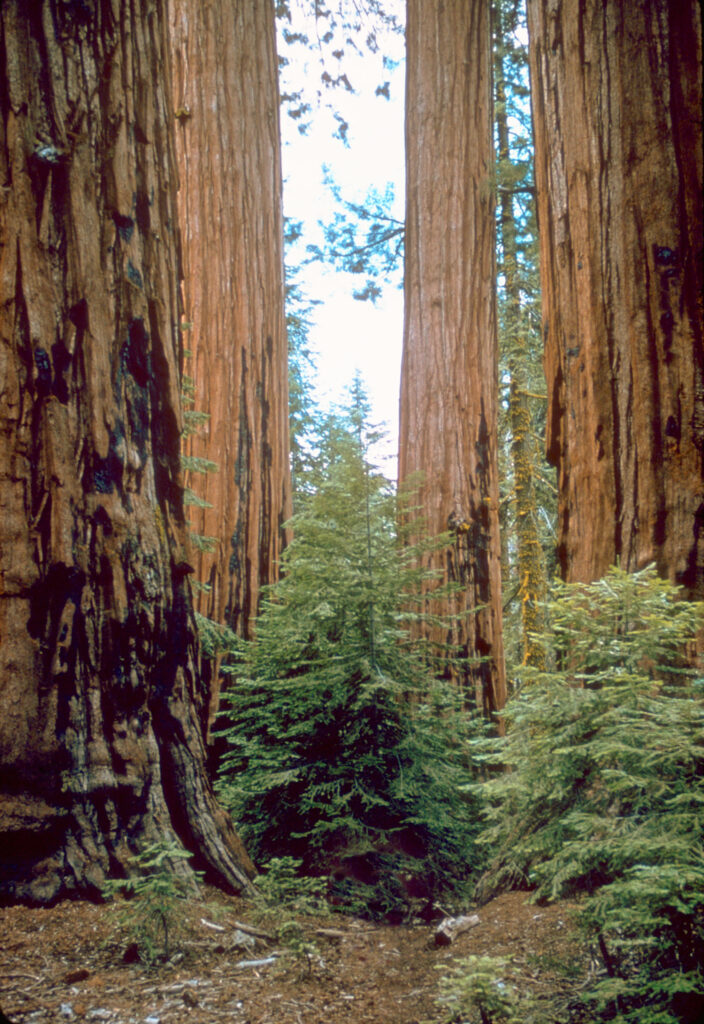
Route Overview and Recommended Itinerary:
Embarking on a road trip from Los Angeles to Sequoia and Kings Canyon National Parks unveils a majestic journey through towering groves of ancient sequoias and breathtaking mountain landscapes. The parks, located approximately 4 hours north of Los Angeles, can be reached by taking CA-99 N and CA-198 E. The total distance is approximately 230 miles. A recommended itinerary spans at least two days, allowing for a comprehensive exploration of both parks. Sequoia and Kings Canyon, often recognized as one of the best road trips from Los Angeles, beckon nature enthusiasts with their unique combination of giant sequoia trees, rugged mountains, and diverse ecosystems. Whether you seek the awe-inspiring General Sherman Tree or the serene beauty of Hume Lake, this road trip stands as an invitation to explore the natural wonders accessible just beyond the city’s boundaries.
Reasons to Explore:
Sequoia and Kings Canyon National Parks beckon nature enthusiasts and adventurers with their unique combination of giant sequoia trees, rugged mountains, and diverse ecosystems. The reasons to explore this natural wonderland extend from witnessing the largest tree on Earth to hiking along picturesque trails, immersing yourself in the peaceful beauty of untouched wilderness.
Key Attractions:
As you traverse Sequoia and Kings Canyon, key attractions captivate with their grandeur. The General Sherman Tree, standing as the world’s most massive tree, is a must-see marvel. The scenic drive through Kings Canyon offers breathtaking viewpoints like Panoramic Point, while the crystal-clear waters of Hume Lake provide a serene setting for relaxation. Moro Rock and Crystal Cave add to the park’s allure, showcasing the diverse landscapes within.
Important Considerations:
Planning a road trip to Sequoia and Kings Canyon National Parks requires considerations for the park’s elevation changes, diverse climate zones, and the limited availability of services within the parks. Ensure your vehicle is equipped for mountainous terrain, and check for any road closures or alerts. Due to the high elevation, weather conditions can vary, so pack layers, sunscreen, and sufficient water for your excursions. Accommodations within the parks should be booked in advance, especially during peak seasons.
FAQ: Frequently Asked Questions
Final Thoughts:
As we conclude this journey through the best road trips from Los Angeles, it’s evident that the possibilities for exploration are as diverse as California’s landscapes. From the sun-kissed beaches to the mountainous terrains, each road trip offers a unique tapestry of experiences.
Whether you find solace in the serene beauty of Lake Arrowhead, marvel at the ancient giants in Sequoia and Kings Canyon National Parks, or embrace the nostalgia of Route 66, the road trips from Los Angeles unfold stories of adventure and discovery. The charm lies not only in the destinations reached but in the moments created along the way – the unplanned detours, the scenic viewpoints, and the connections forged with the vast and varied Californian landscape.
These road trips stand as a testament to the endless wonders that await those who choose to hit the road and explore the beauty that surrounds the City of Angels. So, gas up your vehicle, pack your sense of adventure, and let the open road guide you through the best road trips that Los Angeles has to offer.

